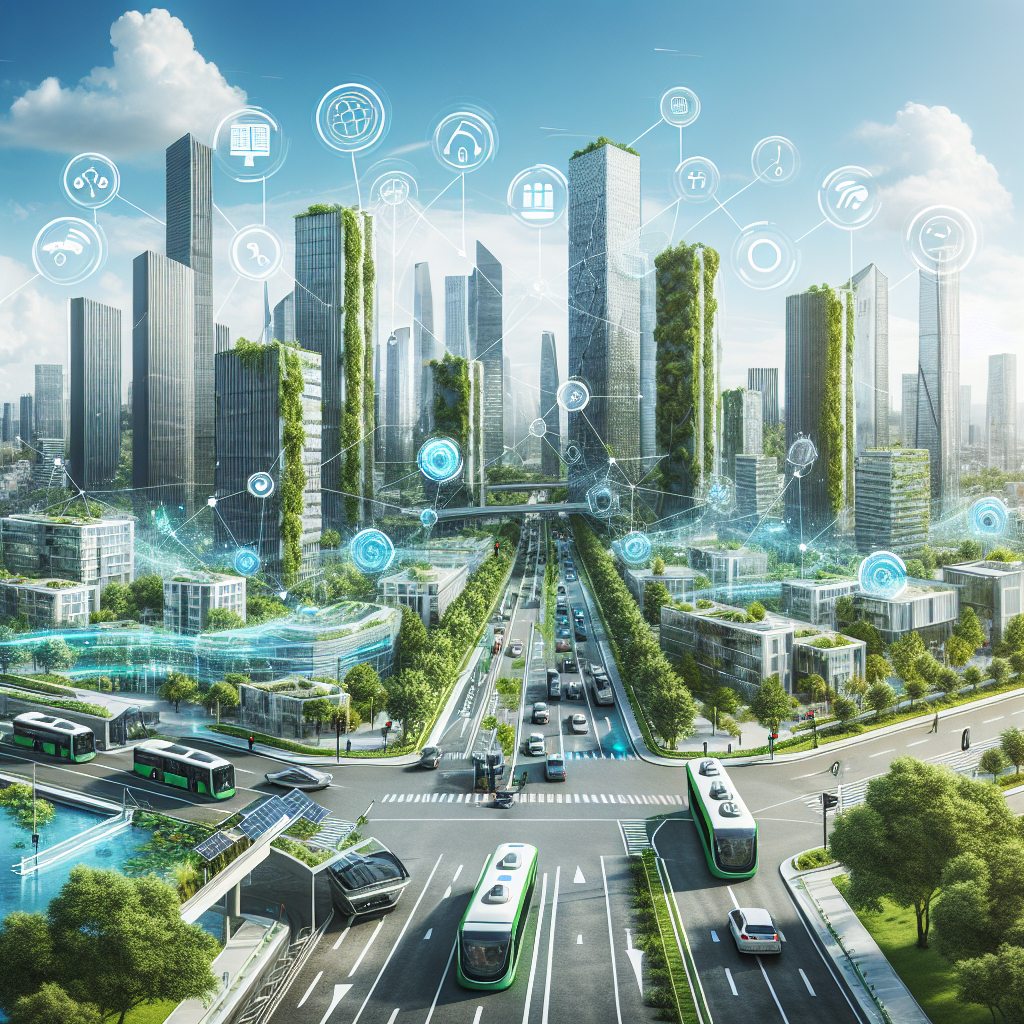Smart Cities: The Path to Urban Sustainability
In the 21st century, urban areas have become the epicenters of human activity, innovation, and economic development. However, this rapid urbanization comes with its set of challenges, including congestion, pollution, and the inefficient use of resources. As we grapple with these issues, the concept of smart cities has emerged as a beacon of hope, promising a more sustainable and efficient way to manage urban life.
Understanding Smart Cities
A smart city uses digital technology and information and communication technologies (ICT) to enhance the quality and performance of urban services such as energy, transportation, and utilities, to reduce resource consumption, wastage, and overall costs. The core idea behind smart cities is to create a more sustainable and efficient urban environment, leveraging technology to improve the lives of its residents.
Key Components of Smart Cities
Smart cities are built on a foundation of key components that work together to achieve sustainability and efficiency:
1. Smart Infrastructure
This involves the development of physical and digital infrastructure that supports an efficient and sustainable urban environment. Examples include energy-efficient buildings, smart grids, renewable energy sources, and advanced water management systems.
2. Smart Mobility
Smart mobility solutions aim to reduce congestion and environmental impact while improving the convenience and efficiency of transportation. This includes the development of public transit systems, bike-sharing programs, electric vehicles, and smart traffic management systems.
3. Smart Technology
Technology is at the heart of smart cities. IoT (Internet of Things) devices, sensors, and advanced analytics are used to collect and analyze data, which is then applied to improve urban services and the quality of life for residents.
4. Smart Governance
Smart governance involves the use of digital tools to enhance the efficiency of municipal operations and facilitate more direct participation by citizens in civic matters. This includes e-government services, open data initiatives, and digital platforms for citizen engagement.
Benefits of Smart Cities
The transition to smart cities offers numerous benefits, including:
– Improved Efficiency: By optimizing resource use and reducing waste, smart cities can significantly lower operational costs and environmental impact.
– Enhanced Quality of Life: Smart cities aim to provide citizens with a cleaner, safer, and more convenient urban environment.
– Economic Development: The adoption of smart technologies can spur economic development by attracting businesses and creating new job opportunities.
– Sustainability: Smart cities are a critical pathway to achieving urban sustainability, tackling issues like pollution, energy consumption, and greenhouse gas emissions.
Challenges and Considerations
Despite the promise of smart cities, there are significant challenges that need to be addressed:
– Privacy and Security: The collection and analysis of large amounts of data raise concerns about privacy and data security.
– Digital Divide: There is a risk that the benefits of smart cities may not be equally distributed, potentially exacerbating social and economic inequalities.
– Implementation Costs: The upfront costs of implementing smart city technologies can be prohibitive for some municipalities.
The Path Forward
To overcome these challenges and realize the full potential of smart cities, it is crucial for stakeholders to collaborate closely. Governments, businesses, and citizens must work together to develop inclusive, sustainable, and resilient urban spaces. By fostering innovation and leveraging technology, we can pave the way for more sustainable and efficient cities of the future.
FAQs
What is a smart city?
A smart city is an urban area that uses digital technology and information and communication technologies to enhance the quality and performance of urban services, reduce resource consumption and costs, and improve the quality of life of its residents.
How do smart cities improve sustainability?
Smart cities improve sustainability by optimizing the use of resources, reducing waste and environmental impact, and promoting the use of renewable energy sources and energy-efficient infrastructure.
What are the main components of a smart city?
The main components of a smart city include smart infrastructure, smart mobility, smart technology, and smart governance.
What challenges do smart cities face?
Key challenges include privacy and security concerns, the risk of exacerbating social and economic inequalities (digital divide), and the high costs of implementation.
How can we ensure that smart cities are inclusive?
Ensuring inclusivity in smart cities requires active engagement with all segments of the community, targeted initiatives to bridge the digital divide, and policies that prioritize equitable access to urban services and benefits.
The evolution of smart cities offers a promising path toward urban sustainability, harnessing technology and innovation to address the pressing challenges of the 21st century. As we move forward, it’s essential to focus on inclusivity, resilience, and collaboration to build cities that are not only smart but also sustainable and humane.

